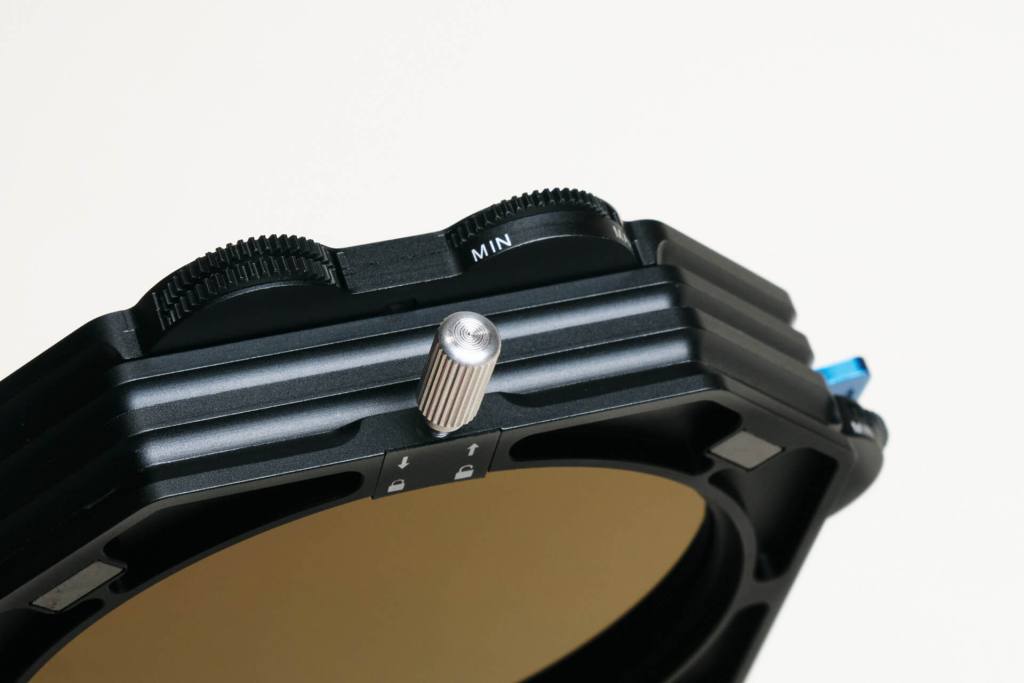If you haven’t already heard, our new Kolari Atlas Matte Box System is coming to revolutionize the way you create. This new magnetic filtering system gives you the freedom to customize your setup on the fly without compromising your vision. One of the ways you can do this is with our 2-in-1 VND/CPL filter made exclusively for the Kolari Atlas.
What is the VND/CPL filter?
A variable neutral density (VND) filter allows you to adjust the amount of light that reaches the camera’s sensor by rotating the filter. This enables you to achieve different exposure values without having to change filters. This feature can benefit any photographer and is indispensable to videographers. Not only can you minimize your gear by carrying one filter instead of four, but quickly adjusting your exposure with the tactile stop values according to changing lighting conditions without messing with your exposure settings can be vital on set or in a fast-paced shooting situation.
A CPL filter, or circular polarizer, is designed to reduce glare and reflections while controlling the light. CPL filters are commonly used in landscape photography to cut through atmospheric haze, enhance the color and contrast of the sky, and reduce reflections on water and other surfaces. They can also reduce glare and reflections on windows, buildings, and other metallic surfaces.
Both of these filters can be remarkably useful in nearly any situation. In addition to being powerful light controllers on their own, these filters can be combined with others to achieve different effects. However, stacking rotating filters can be problematic, as adjusting the rear filter can rotate the front filter and cause the settings to change.
To address this issue, the Kolari Atlas Magnetic VND/CPL filter combines a VND and a CPL into one, allowing for separate light and glare reduction adjustments without the need to stack filters. Built with two rotating gears, these effects can be adjusted independently of one another. This design also provides rotational stability, eliminating the need to re-adjust settings when making changes.
Why do you need the VND/CPL?
Separate VND and CPL filters are available for the Kolari Atlas with rotating gears on the side, meaning they can be stacked and adjusted without affecting the other, unlike traditional rotating lens filters. However, when these two separate filters are used together, regardless of their form factor, you will always get a minimum of 3 stops of light reduction. The 2-in-1 VND/CPL filter reduces this phenomenon down to 2 stops of light reduction.
The VND/CPL filter is an innovative and versatile tool for photographers and videographers. It is not just lightweight and compact but can also be positioned at any point within the filter stack, which is a great advantage over traditional filters that can only be placed at the front of the lens. This feature allows for more flexibility and creativity in shooting in a variety of lighting conditions.
In addition to its convenience and ease of use, the VND/CPL filter also delivers high-quality images and videos with improved color saturation, contrast, and clarity. The neutral density filter reduces the amount of light entering the lens, which allows for longer exposure times and can create stunning motion blur effects in videos and photos. The circular polarizer filter, on the other hand, helps eliminate glare and unwanted reflections from reflective surfaces such as water, glass, or metal, making it ideal for landscape, architecture, and product photography.
With all these benefits, the VND/CPL filter is a popular choice among both amateur and professional photographers and videographers. It allows them to streamline their gear and workflow while still producing high-quality and creative content.










